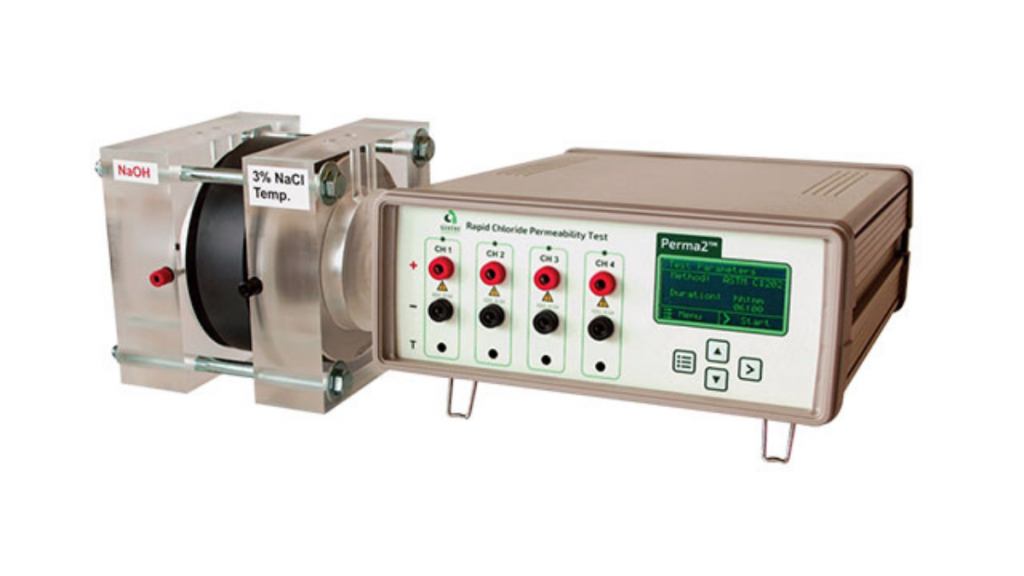Determining Durability of Concrete with RCPT Test
Concrete is one of the most adaptable and generally involved development materials on the planet. Its solidness is the key trademark that decides the life expectancy of designs.
The strength of cement is characterized as its capacity to oppose enduring activity, synthetic assault, scraped spot, or some other course of crumbling. Sturdy cement can hold its unique structure, quality, and usefulness when presented to destructive impacts of the climate. Appropriately ready, tried, and applied cement can furnish many years of administration with almost no upkeep.
Degradation of Concrete
The construction can be impacted by wind, precipitation, or temperature. In this way, factors for the seriousness of decay ought to be painstakingly thought of. Certain different circumstances and unfriendly conditions might prompt the crumbling of cement as well.
Going after instruments can be compound, physical, or mechanical and start from outer or inside sources. Contingent upon the idea of the assault, care ought to be taken in different parts of substantial like glue, totals, or building up parts. Likewise, the nearby environment to which the construction would be uncovered should be thought of.
The reasons for disintegration of cement and measures to forestall such harm improve the strength of substantial designs. Freezing and defrosting, antacid total response (AAR), forceful substance openness, erosion of metals, scraped area, imperviousness to fire of cement, and breaking ought to be dealt with, at all stages.
Rapid Chloride Permeability Test (RCPT)
Quick Chloride penetrability test (RCPT) decides the protection from entrance of chloride particles. The quick chloride penetrability test RCPT-ASTM C 1202 is generally used to assess the opposition of cement to chloride particles entrance attributable to its effortlessness and speed.
RCPT is an electrical sign of concrete�s capacity to oppose chloride particle infiltration. It empowers the expectation of the assistance life of substantial designs. Utilized for solidness based quality control purposes, the steady voltage (V) is applied to a substantial example for 6 hours and the ongoing going through the substantial is recorded to track down the coulombs.
This test decides the electrical conductance of the various grades of substantial blends and demonstrates its protection from the infiltration of chloride particles. State sanctioned testing methods are in AASHTO T 277 or ASTM C 1202.
It screens how much electrical flow passed through substantial examples for a predefined time frame. The development of particles in a permeable medium under a focus slope is called dispersion. It is much of the time important to discover the impermeability of cement to chloride particles as a quality control measure and evaluation of enhancements in properties of new concrete.
Measurements for RCPT
RCPT is estimated in Coulomb. Current is estimated in ampere. A coulomb is an ampere � second which implies one ampere went through the substantial example in one moment is one coulomb, and the charge passed in 60 seconds would be 60 coulombs. Higher the coulomb, the higher the porousness as well as the other way around.
Apparatus for RCPT
This test is directed through Fast Chloride Penetrability Test gear. It comprises of two repositories. One of them has 3.0% of NaCl arrangement and another repository has 0.3M NaOH arrangement. Concrete with the thickness 50mm and dia 90-100mm is utilized as a test example.
Chloride Test Procedure
The substantial example having dia 100mm and thickness of 50mm is projected and immersed. The substantial example is in the middle of between the two supplies (known as a solitary cell) having NaCl arrangement in one repository and NaOH arrangement in the other.
These repositories are associated with DC supply and the voltage of 60V is applied to the substantial example at the two closures for 6 hours. Presently, the ongoing going through the substantial at various time stretches is estimated. Not entirely set in stone by a LCD is associated with the cell.
The following is a table to decipher RCPT test results: Q = 900 � I(0) + 2�I(30) + 2�I(60) + 2�I(120) … … ..+ I(360)
| Charge (coulombs) | Chloride Permeability |
| >4000 | High |
| 2000 – 4000 | Moderate |
| 1000 – 2000 | Low |
| 100 – 1000 | Very Low |
| <100 | Negligible |
